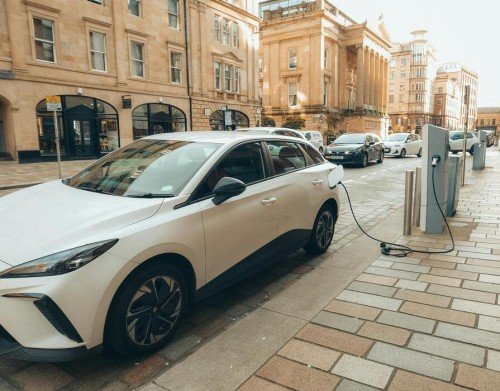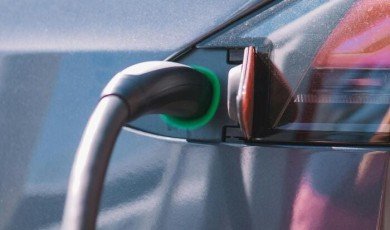
The automotive world is accelerating into a new era where gasoline-powered engines are slowly giving way to clean and efficient alternatives. Electric vehicles (EVs) and hybrid models are no longer futuristic concepts but real solutions shaping transportation today. This shift from gas to green reflects not only a technological revolution but also a cultural, political, and economic transformation. Around the globe, countries, businesses, and consumers are working together to create a future where sustainability and mobility go hand in hand.
Why the World Is Going Green
The urgency to combat climate change is one of the strongest drivers behind the transition to sustainable vehicles. Transportation remains one of the largest contributors to carbon emissions, and reducing reliance on fossil fuels has become a priority for governments worldwide. Policies promoting clean energy, stricter emission standards, and incentives for EV adoption are ensuring that the industry moves away from outdated models and embraces cleaner alternatives.
The Technology Driving Change
The backbone of sustainable mobility lies in advanced technology. Electric batteries, hydrogen fuel cells, and hybrid systems are transforming how vehicles operate. Battery efficiency continues to improve, lowering costs and extending driving range. Hydrogen fuel technology is opening new opportunities for long-haul transportation. Software advancements are also revolutionizing vehicle performance, enabling smart energy management, predictive maintenance, and connectivity features that enhance the driving experience.
The Global Marketplace
This green transformation is not confined to one region, it’s global. In Europe, countries like Norway and Germany are leading the way with impressive EV adoption rates. China has rapidly become the world’s largest electric vehicle market, with domestic manufacturers challenging established Western brands. Meanwhile, in the United States, automakers are investing billions into new EV production lines. The international competition and cooperation are accelerating innovation, creating a dynamic and interconnected marketplace.
Consumer Perceptions and Behavior
For consumers, sustainable vehicles represent more than environmental responsibility. They symbolize innovation, modern lifestyles, and future-oriented thinking. Still, affordability, charging convenience, and performance remain major factors influencing purchasing decisions. As more charging stations appear and battery technology improves, public trust in EVs continues to grow. Slowly but surely, drivers are leaving behind gasoline cars in favor of cleaner, more efficient alternatives.
Digital Marketing and Awareness
For automakers and EV startups alike, digital presence is essential in educating and attracting consumers. Beyond producing great vehicles, companies must ensure their message reaches global audiences. Here, digital marketing strategies play a crucial role. Search engine optimization (SEO), content marketing, and social media campaigns help brands connect with eco-conscious buyers. Interestingly, off-page seo strategies, such as building backlinks from authoritative sources and gaining media mentions are becoming critical for promoting sustainable vehicle initiatives online. Just as EVs need infrastructure to thrive, companies need strong digital ecosystems to amplify their message.
Off-Page SEO and Global Reach
While on-page strategies optimize websites internally, off-page seo builds trust and authority across the web. For the electric vehicle industry, this means gaining visibility in sustainability reports, government portals, green-energy blogs, and global news outlets. By strengthening digital credibility, automakers not only improve search engine rankings but also educate more consumers about sustainable transportation. This approach is particularly important as EV adoption spreads worldwide, requiring companies to reach audiences across different markets and languages.
Infrastructure Challenges
Despite progress, the transition to sustainable vehicles still faces obstacles. Charging infrastructure, while expanding rapidly, is unevenly distributed. Rural areas often lack reliable charging points, creating disparities between urban and non-urban adoption. Additionally, the environmental impact of mining lithium and cobalt for batteries continues to spark debate. Industry leaders are now investing in recycling programs and alternative materials to address these concerns.
Economic and Social Implications
The rise of sustainable vehicles has significant ripple effects on global economies. Traditional industries, from oil production to automotive manufacturing, are being disrupted. At the same time, new jobs are being created in clean technology, renewable energy, and EV maintenance. Cities are rethinking transportation systems, integrating green fleets into public services, and redefining mobility in urban planning. This shift represents not just a technological adjustment, but a deep cultural change.
The Road Ahead
Looking to the future, it’s clear that sustainable vehicles will become the norm rather than the exception. Continuous innovation in battery technology, the expansion of charging infrastructure, and supportive government policies will accelerate this trend. As drivers worldwide embrace greener options, the global automotive landscape will be defined not by gasoline engines but by sustainability, efficiency, and innovation.
Conclusion
The journey from gas to green is more than just a technological evolution, it’s a global movement. Sustainable vehicles are shaping how we live, move, and interact with our environment. By combining cutting-edge technology, strong digital strategies, and consumer awareness, the industry is building momentum that is both unstoppable and necessary. The green revolution is not on the horizon; it’s already here, and it’s driving us toward a cleaner, smarter, and more connected future.
Most Read
Featured Posts

Il ruolo dei veicoli connessi nella vita urbana






